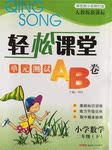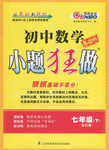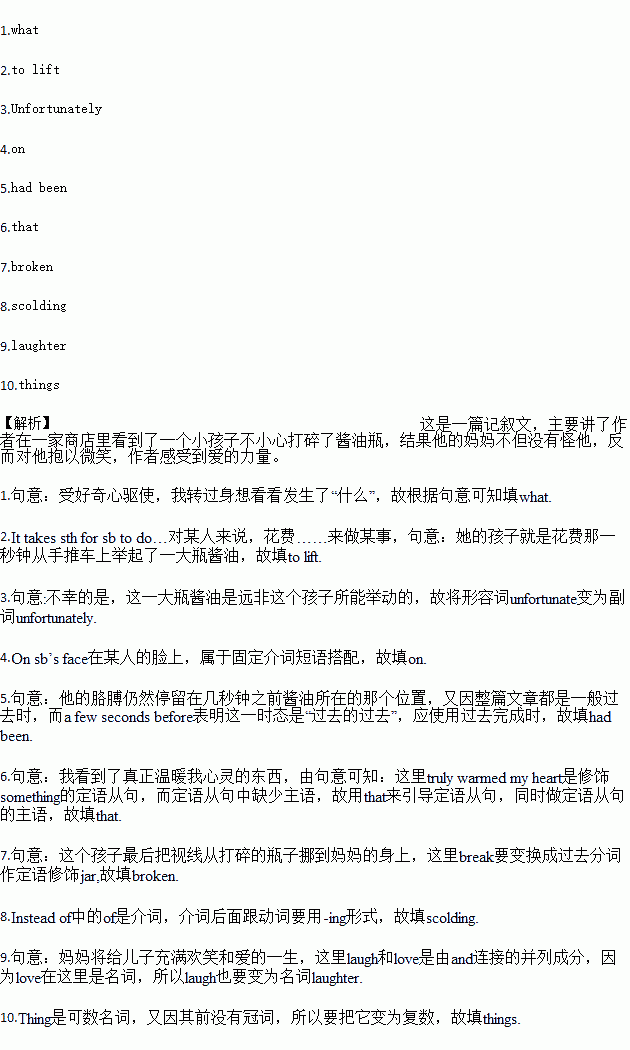题目内容
I was in a local store the other day when suddenly I heard the sound of breaking glass behind me.Curiously,I turned around to see1.had happened.A young mother had turned away from her shopping cart for a second to look at some other goods she was interested in.That second was all it took for her baby boy2.(lift) a big jar of sauce from his seat in the cart.
3.(unfortunate),the big jar was more than he could handle.I smiled when I walked back and saw the look of complete fear4.the boy's face.He seemed not to know why.His arms still remained where the jar5.(be) a few seconds before.On the floor below the cart the liquid of red was slowly flowing across the passage.After making sure that both Mom and the baby were fine,I went downstairs to get help from a store employee.As I glanced back at them,I saw something6.truly warmed my heart.
The baby had finally taken his eyes off the7.(break) jar and looked up at his mom.Instead of8.(scold) him, she smiled down at him.I knew then that this Mom would give her son a lifetime full of9.(laugh) and love.I think we should learn to love.Yet,hard as we try,we often make10.(thing) messy too.
 轻松课堂单元测试AB卷系列答案
轻松课堂单元测试AB卷系列答案 小题狂做系列答案
小题狂做系列答案
